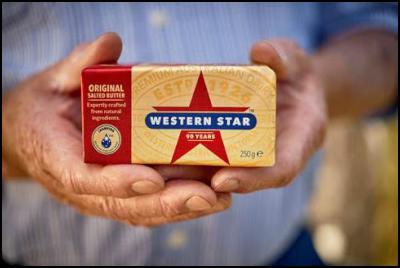Fonterra’s Australian Business is on Track
27 March 2017
Fonterra’s Australian Business is on Track And Investing for the Future

Fonterra’s Australian business is in good shape and performing well, says Fonterra Australia managing director René Dedoncker.
The Fonterra Co-operative Group Ltd announced its half-year results for its global operations, posting a NZD$418 million net profit after tax, up two per cent.
Fonterra Australia has contributed to this overall result which René says comes on the back of “all the hard work with our turnaround, making sure we’re focussing on areas where we have a clear advantage.
“We had to make tough decisions with our transformation. Our three businesses are now delivering good results for us, although there are headwinds ahead,” René says.
“In Ingredients, we’re achieving strong exports and are on track to become the largest exporter in Australia. In fact, it has the healthiest new product development pipeline in history. Our Darnum site is driving value, and is expected to produce more than 40,000 tonnes in this financial year.
“In the Consumer area, we’re the branded leader in cheese and spreads, and we’re developing new, innovative products to meet with the changing needs of our consumers.
“And in Foodservice, which is all food that is consumed out of the home such as in restaurants, cafes and fast food, we’re winning in our Italian Kitchen area with our specially formulated cheeses and cooking creams,” René says.
To meet the growth demand, Fonterra is investing in more capacity at its processing sites.
Its A$140 million Stanhope cheese plant in Victoria is on track, with the first cheese expected to roll off the line in mid-2017. It’ll produce 50 per cent more cheese for the domestic and export market.
“We’re also investing in our Wynyard site in Tasmania to put in more cheese capacity, and at Cobden, we’ve built a new cool room to accommodate the growing demand for butters.
“We’re also consolidating our warehouses and distribution centre into one state-of-the-art 12-storey distribution facility due to be ready in the middle of this year.”
“This improved performance has enabled us to lift our forecast milk price for the season to $5.20 per kgMS, from an opening price of $4.75 per kgMS.”
René acknowledges the challenging times experienced by dairy communities in Australia over the past year.
“It has been difficult for our farmers, their families, communities and the dairy industry as a whole. We’ve learned that we all need to stay closer to the signals from the global markets, as the milk price being paid just wasn’t reflective of the world market,” he says.
“We’re fully committed to working with and building good relationships with our farmers.”
ENDS


 Bill Bennett: Download Weekly - How would NZ telecoms cope with another cyclone
Bill Bennett: Download Weekly - How would NZ telecoms cope with another cyclone NZ On Air: Firm Audience Favourites Lead NZ On Air Non-Fiction Funding
NZ On Air: Firm Audience Favourites Lead NZ On Air Non-Fiction Funding Insurance and Financial Services Ombudsman: Woman Gets $40k More After Disputing Insurer’s Decision
Insurance and Financial Services Ombudsman: Woman Gets $40k More After Disputing Insurer’s Decision BNZ: A Quarter Of Older NZers Fear Going Online Due To Scam Concerns
BNZ: A Quarter Of Older NZers Fear Going Online Due To Scam Concerns University of Auckland: Scientists Develop Tool To Monitor Coastal Erosion In Fine Detail
University of Auckland: Scientists Develop Tool To Monitor Coastal Erosion In Fine Detail Oji Fibre Solutions: OjiFS Proposes To Discontinue Paper Production At Kinleith Mill
Oji Fibre Solutions: OjiFS Proposes To Discontinue Paper Production At Kinleith Mill



